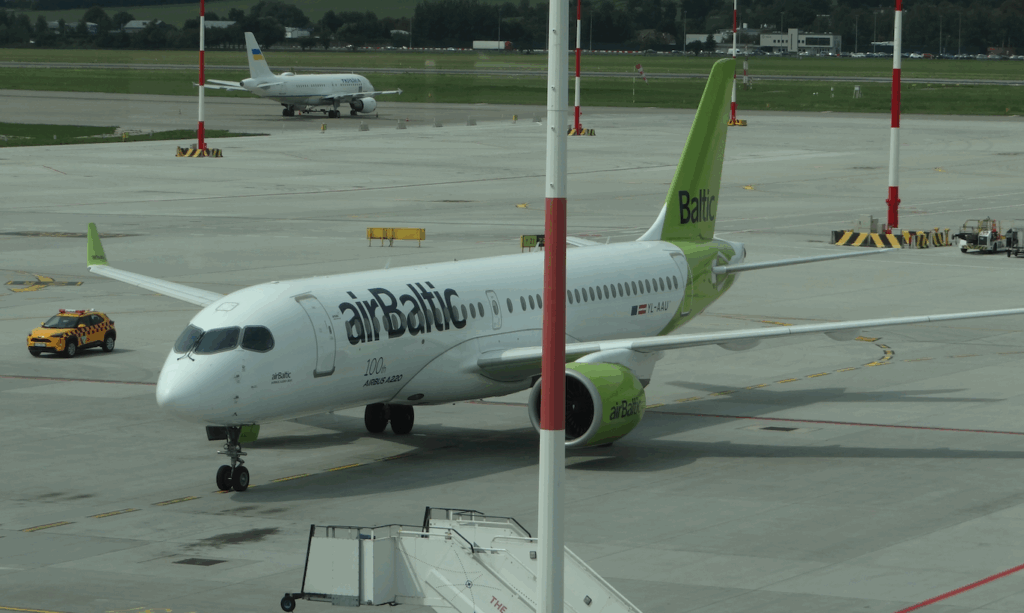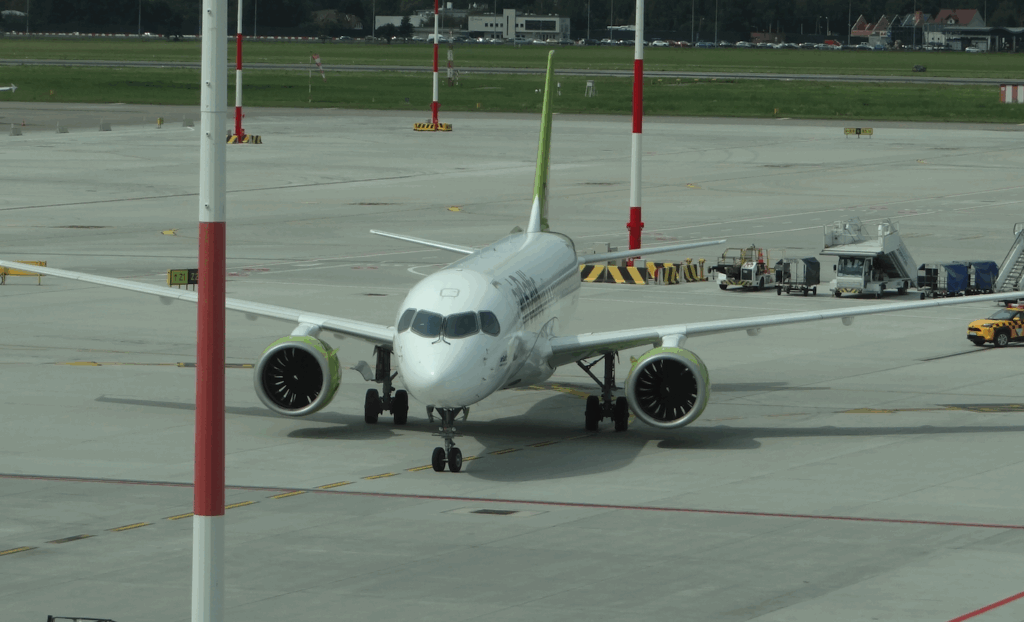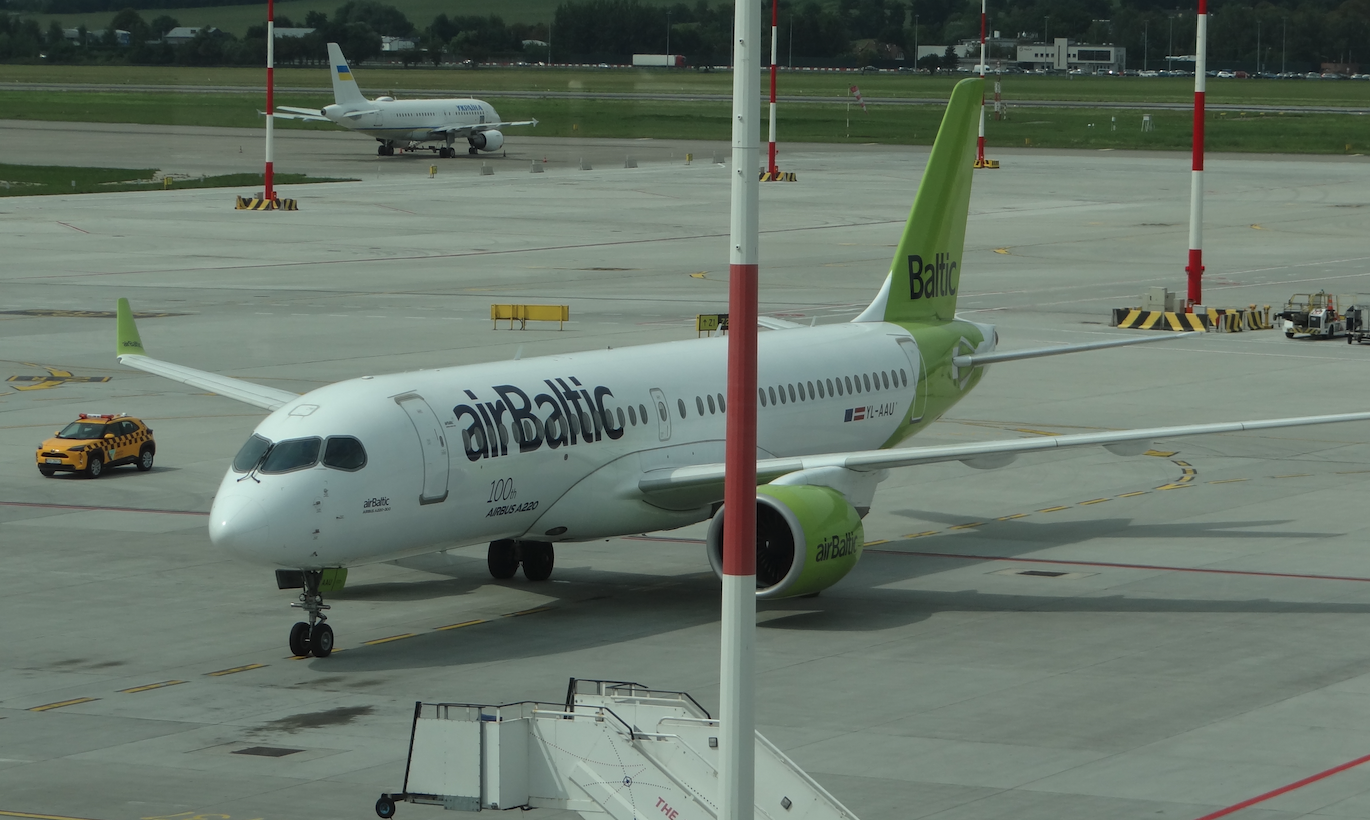Kraków 2025-06-20
Airbus A-220.



The Airbus A-220 is a commercial aircraft, with a medium number of passenger seats and medium range. The aircraft is built in a classic layout; narrow-body, low-wing, classic aircraft tail, powered by two turbofan engines. The aircraft uses American Pratt & Whitney PW1500G engines, which have a gearbox.
The aircraft was developed by Bombardier Aerospace (Canada) as a competitor to the Embraer E-jet. The Canadians called the aircraft C-Series and initially planned to build two versions; the 100 and the 300. Tests did not go smoothly. To make matters worse, Bombardier ran into financial trouble. Work on the aircraft was suspended. After numerous negotiations, on July 1, 2018, the program was taken over by Airbus. Airbus acquired a 50.01% stake in the C-Series program in October 2017. The transaction was closed in July 2018. As part of it, Bombardier retained a 31% stake in the aircraft, while Investissement Québec has a 19% stake.
The CS100 aircraft (Airbus A-220-100) made its first flight on September 16, 2013. On January 18, 2015, the aircraft received a certificate from the Canadian Ministry of Transport. The first aircraft was delivered to Swiss Global Air Lines. The A-220-300 (formerly CS300) version, accommodates 130-160 passenger seats. It made its first flight on February 27, 2015. Since December 14, 2016, the aircraft entered service with airBaltic. In 2024, about 240 aircraft were in service.
The Airbus A-220 aircraft uses 20% composites. The passenger cabin is equipped with large, rotating lockers for hand luggage. The width of the cabin allows for the placement of seats in a 2 x 3 configuration, for economy class. With this arrangement, the fuselage of the aircraft can be shorter. Airbus is trying to compare the A-220 aircraft to larger aircraft, which misses the point. The A-220-100 (formerly CS100) has a capacity of 108-133 seats. The longer A-220-300 (formerly CS300) can take up to 160 passengers.
T-T Airbus A-220-300 data:
Span 35.10 m (115 ft). Length 38.71 m (127 ft). Height 11.5 m (38 ft). Takeoff weight 70,900 kg. Range 3,400 nmi (6,300 km; 3,900 mi). Cruise speed Mach 0.82 (470 kn; 871 km/h; 541 mph). Operating ceiling 12,500 m (41,000 ft). Pratt & Whitney PW1500G engines depending on the version with 2 x 98 kN or 2 x 108.5 kN thrust. The engines are equipped with gearboxes.
Airbus A-220 for LOT Polish Airlines.
The choice of Airbus A-220 aircraft for PLL LOT was definitely a political choice. The decision to introduce another brand of aircraft to the fleet of the national carrier will affect another complication of logistics in the company. Without a doubt, the elites of Western Europe are the most pleased with PLL LOT’s decision; corrupt, uneducated, incapable of improving the security of their nations, hindering the development of technology and introducing further sick ideologies. In Poland, the Masonic press is only concerned with praising the choice made, completely silent about the proposal of Embraer, which has been cooperating with PLL LOT since 2004.
But let’s look at the equipment situation at PLL LOT. The last Bombardier Q-400 (Dash 8-400) aircraft in PLL LOT colors ended their service at the beginning of 2023. They did not enjoy a good reputation, and problems with the landing gear were frequent. On December 6, 2022, a ceremonial, symbolic farewell flight of the SP-EQI aircraft took place. At that time, the aircraft drew the LOT logo in the sky and flew from Poznań to Warsaw. On January 1, 2023, the last regular flight took place; flight LO3836 from Gdańsk to Warsaw, which definitively ended the history of turboprop aircraft in LOT Polish Airlines.
At that time, Embraer’s offer was already on the table. The company was offering E-Jet E2 family aircraft, in particular the E-190-E2 and E-195-E2 versions. PLL LOT had already decided to lease three E-195-E2 aircraft from the American company Azorr Aviation. Delivery was to be completed in October 2024. PLL LOT uses a program called POOL, which supports the distribution of spare parts and technical assistance to the Embraer fleet. The program is supported by the Americans. It should also be remembered that Embraer has very good arrangements with the US, in exchange for not building passenger planes with more than 150 seats. This is due to not entering the segment reserved for the Boeing B-737. Additionally, Embraer offered KC-390 Millennium transport aircraft, which are selling better and better in Europe. The Brazilians offered production or final assembly in Poland. The existing contract with Embraer, the priority purchase, still covers 44 aircraft and over 300 spare parts and was initialed in 2022.
Unfortunately, for now, Embraer’s offer has been thrown in the bin. Why should we be surprised when we look at the German government in Poland. In June 2025, the current government chose the offer of the Airbus concern, which offered A-220 aircraft. PLL LOT decided to buy 40 aircraft with an option for another 44 aircraft. As a result, this may amount to 84 aircraft. This means the failure of Embraer’s offer in the regional fleet segment.
Comparison of Embraer E195-E2 with Airbus A220-300:
E-195-E2: Number of passenger seats 120-132. Range 4,815 km. Pratt & Whitney PW1900G engines. Fuel consumption 17% less than the E1 versions. Wingspan 35.1 m (with sharklets). Length 41.5 m. Cargo capacity 14.3 m3. Full fly-by-wire cockpit, Honeywell. Cheaper to buy and lease, up to 20%. Lower operational risk. Lower training and logistics costs. Very good fuel efficiency, for its class. Great for regional routes. Better version of engines.
A-220-300: Number of passenger seats 130–150 seats. Range 6,297 km. Pratt & Whitney PW1500G engines. Fuel consumption similar to E2. Wingspan 35.1 m (with winglets). Length 38.7 m. Cargo capacity 19 m3. Full fly-by-wire cockpit, Collins. Greater range and greater capacity. Greater range, which allows flights such as Warsaw–Dubai, Tbilisi, Keflavik, non-stop. Wider cabin and seats in 2+3 arrangement. The aircraft is not suitable for operation outside Europe. The aircraft has greater advantages only on routes over 4,000 km. Version A-220-100 capacity only 100-115 passengers. In both aircraft (E2 / A.220) the comfort for passengers is identical.
On June 16, 2025 (Monday), during the Paris Air Show, LOT Polish Airlines signed a contract for the delivery of Airbus A-220-100 aircraft (certification in 2016) and Airbus A-220-300 (certification in 2018). It was a political decision. 40 aircraft were ordered. The first aircraft will be delivered in 2027. The aircraft will be delivered in a poorer version. There will be no USB sockets or WiFi access. The cabin baggage containers are smaller than those on board the Embraer E195-E1. Recaro seats.
It is worth mentioning that at that time, LOT Polish Airlines had 86 aircraft: B-787, B-737, Embraer. The turboprop aircraft ended their flights on January 1, 2023. The A-220 aircraft will be the first Airbus aircraft in LOT Polish Airlines.
The narrative that the A-220 was created specifically for the European market is untrue, because the plane was developed by the Canadian company Bombardier for the North American market. The program had major problems in the first development phase, which led to the company’s collapse. The almost completed program was taken over by Airbus, for the amount of 591 million CAD (about 450 million USD). Airbus currently has a 75% share in the program.
Currently, A-220 aircraft are used by 20 commercial carriers. The largest number of aircraft is in the fleet of Delta Air Lines (USA) 79 units, the fleet of airBaltic (Latvia) 50 units. The fleet of JetBlue Airways (USA) 47 units and Air France (France) 44 units. Currently (2025) Airbus has an order book for 486 units. So far, there has been one crash of an A-220 aircraft resulting in the death of one person (on December 23, 2024).
Written by Karol Placha Hetman

